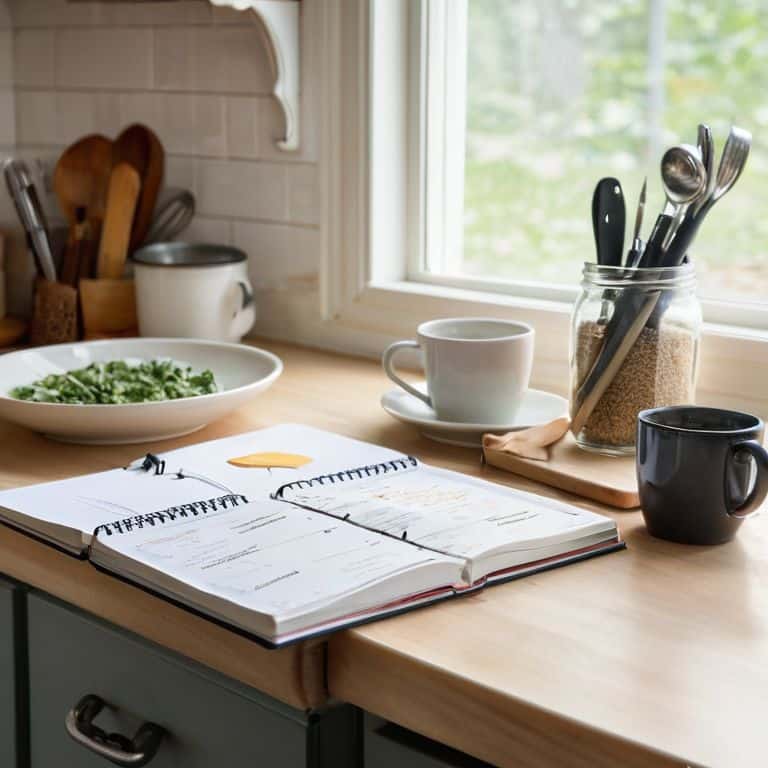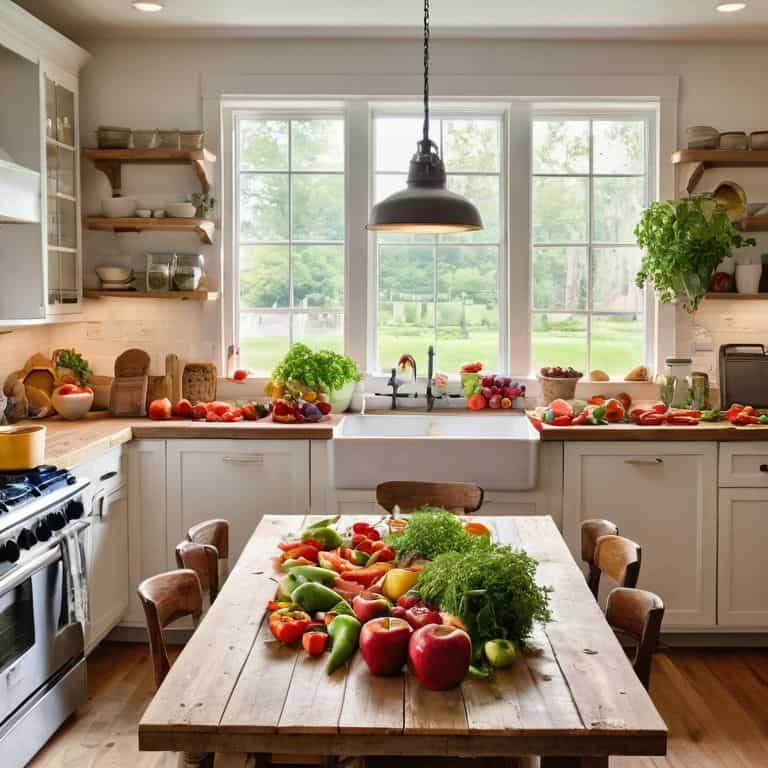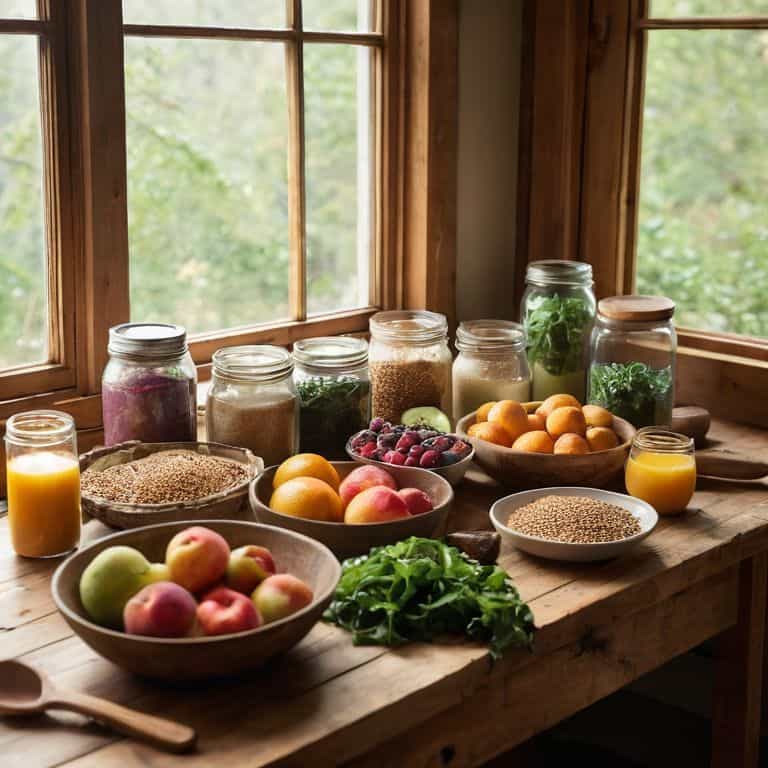I still remember the days when I thought a guide to meal planning had to be about deprivation and restriction. As a nutritionist, I used to believe that the key to a healthy diet was cutting out all the “bad” foods and sticking to a rigid plan. But the more I worked with clients, the more I realized that this approach just wasn’t sustainable – or enjoyable. I’ve since learned that the healthiest ingredient is joy, and that a good meal plan should be about adding nutrients and flavor, not just removing calories.
In this article, I’ll share my personal approach to creating a guide to meal planning that actually works. I’ll show you how to ditch the diet drama and focus on cooking up food that makes you happy. You’ll learn how to listen to your cravings and create a plan that nourishes your body and soul. My goal is to empower you with practical, no-hype advice that will make meal planning a breeze. By the end of this guide, you’ll be equipped with the tools and confidence to create a meal plan that’s tailored to your unique needs and tastes – and that you’ll actually enjoy following.
Table of Contents
Guide Overview: What You'll Need

Total Time: 1 hour 30 minutes
Estimated Cost: $10 – $30
Difficulty Level: Easy
Tools Required
- Pen (for writing down meal ideas)
- Paper (for creating a meal planning calendar)
- Computer (for online recipe research)
Supplies & Materials
- Notebook (for organizing recipes)
- Pencil (for making adjustments to meal plans)
- Eraser (for correcting mistakes)
Step-by-Step Instructions
- 1. First, let’s start by ditching the diet drama and focusing on what really matters: cooking up food that makes you happy. To begin, take some time to reflect on your eating habits and identify what you enjoy eating. Think about your favorite foods, flavors, and textures. This will help you create a meal plan that’s tailored to your tastes and preferences.
- 2. Next, get to know your pantry and take stock of the ingredients you already have at home. This will help you avoid buying duplicate items and reduce food waste. Make a list of the staples you have on hand, such as grains, proteins, and spices, and think about how you can use them to create delicious meals.
- 3. Now, let’s talk about meal planning basics. Start by planning out your meals for the next few days or week. Consider your schedule, dietary needs, and the ingredients you have on hand. You can use a planner, app, or even just a piece of paper to jot down your ideas. Don’t worry too much about perfection – the goal is to create a flexible plan that you can adjust as needed.
- 4. When it comes to creating a balanced meal, think about including a variety of foods from different food groups. Aim to include a source of protein, healthy fat, and complex carbohydrates in each meal. This will help keep you full and satisfied, and provide your body with the nutrients it needs to thrive.
- 5. One of my favorite tips for making meal planning a breeze is to prep ahead of time. Set aside some time on the weekend or one day a week to chop vegetables, cook proteins, and assemble meals. This will save you time and energy during the week, and make it easier to stick to your plan.
- 6. Another key step is to listen to your body and pay attention to your hunger and fullness cues. Eat when you’re hungry, stop when you’re satisfied, and don’t be too hard on yourself if you slip up. Remember, the goal is to nourish your body and enjoy the process, not to follow a strict set of rules.
- 7. Finally, make it fun and get creative with your meal planning! Try new recipes, experiment with different flavors and ingredients, and don’t be afraid to make mistakes. You can also involve your family or friends in the process, and make meal planning a fun and collaborative activity.
A Guide to Meal Planning

As I always say, healthy meal planning is all about finding a rhythm that works for you. For meal prep beginners, it’s essential to start small and be consistent. Begin by planning your meals for just a few days, and then gradually increase the duration as you become more comfortable with the process. I also recommend exploring seasonal meal planning tips to ensure you’re using the freshest ingredients available.
When it comes to batch cooking for weight loss, it’s crucial to focus on nutrient-dense foods that are low in calories but high in flavor. Some of my favorite ingredients for batch cooking include lean proteins, whole grains, and a variety of colorful vegetables. By incorporating these foods into your meal plan, you’ll be well on your way to creating healthy, satisfying meals that support your weight loss goals.
To take your meal planning to the next level, consider creating a monthly meal planning calendar. This will help you stay organized and ensure that you’re never left wondering what’s for dinner. Plus, it’s a great way to plan ahead and make the most of your grocery budget, allowing for healthy meal planning on a budget. By being intentional with your meal planning, you’ll be able to enjoy delicious, nutritious meals without breaking the bank.
Healthy Planning on Budget
Healthy planning doesn’t have to break the bank. As a nutritionist, I believe that wholesome food can be accessible to everyone, regardless of budget. To start, focus on seasonal produce and whole grains, which are often more affordable than processed foods. You can also get creative with meal prep by repurposing leftovers and planning meals around what’s on sale at your local market. I love scouring farmers’ markets for inspiration and finding ways to make nutritious meals that fit my clients’ budgets. By planning ahead and shopping smart, you can nourish your body without draining your wallet.
Meal Prep for Beginners Joy
As a beginner, meal prep can feel overwhelming, but trust me, it’s a game-changer. Start by dedicating just one day a week to preparing your meals. Begin with simple, nourishing recipes that bring you joy – think hearty salads, wholesome soups, or vibrant stir-fries. Remember, the goal is to make healthy eating a delight, not a chore. Experiment with new ingredients and flavors to keep things exciting.
I love starting my meal prep day with a trip to the farmers’ market to gather seasonal inspiration. Then, I head home to chop, roast, and sauté my way to a week’s worth of delicious, healthy meals. It’s amazing how a little prep can set you up for success and make healthy eating feel effortless. Plus, the joy of creating something nourishing just for you is the best ingredient of all!
Nourishing Your Way: 5 Essential Tips for Joyful Meal Planning
- Start with self-love: take time to understand your cravings and nutritional needs, and plan your meals around foods that bring you joy and satisfaction
- Shop the seasons: visit your local farmers’ market to discover fresh, in-season ingredients that will add variety and excitement to your meal plan
- Make it a ritual: set aside time each week to plan and prep your meals, and turn it into a mindful, enjoyable experience – put on your favorite music, and savor the process
- Get creative with leftovers: think of leftovers as an opportunity to get inventive, and plan your meals around using up every last bit of nutritious goodness
- Be kind to your budget: meal planning doesn’t have to break the bank – focus on whole, unprocessed foods, and get creative with herbs and spices to add flavor without added expense
Nourishing Your Way: 3 Key Takeaways
Embracing joy as the healthiest ingredient, I’ve learned that meal planning is not just about nutrition, but about cooking up food that brings us happiness and fulfillment
By focusing on adding nutrients rather than just removing calories, we can create balanced and delicious meals that nourish our bodies and satisfy our cravings
Whether you’re a beginner or a seasoned meal prepper, the key to successful meal planning lies in finding a rhythm that works for you, and making conscious choices that prioritize your well-being and joy, all while staying within your budget
Nourishing Wisdom
A meal plan that truly nourishes you is not just about the food, it’s about feeding your soul with every bite – it’s about embracing the joy of cooking, the love of flavors, and the comfort of knowing you’re taking care of yourself.
Laura Paskal
Embracing the Joy of Meal Planning

As we conclude this guide to meal planning, let’s recap the key takeaways: healthy eating is not just about following a set of rules, but about nourishing your body with whole, delicious foods. We’ve covered the basics of meal prep, from planning to execution, and explored ways to make healthy eating accessible and affordable. By focusing on adding nutrient-dense foods to your diet, rather than cutting out certain food groups, you’ll be well on your way to developing a positive relationship with food and your body. Remember, meal planning is a journey, not a destination – it’s okay to take it one step at a time and make adjustments as you go.
As you embark on your own meal planning adventure, I want to leave you with a final thought: food is a celebration of life, and it should bring you joy. Don’t be afraid to get creative in the kitchen, try new recipes, and make mistakes – it’s all part of the process. By embracing the joy of meal planning, you’ll not only nourish your body, but also your mind and spirit. So go ahead, get cooking, and savor the flavors of a healthier, happier you!
Frequently Asked Questions
How can I ensure I'm getting all the necessary nutrients while meal planning on a tight budget?
Don’t worry, nourishing your body on a budget is totally doable! Focus on whole, seasonal foods like beans, lentils, and frozen veggies, which are rich in nutrients and easy on the wallet. I also love shopping at farmers’ markets or using coupons to score affordable, wholesome ingredients.
What are some tips for avoiding food waste when planning meals for the week?
To avoid food waste, I plan meals around what’s already in my fridge and pantry. I also shop my local farmers’ market for seasonal produce, and make a ‘use up’ list to get creative with leftovers – it’s amazing how a little planning can reduce waste and spark new recipe ideas!
Can you provide examples of healthy meal prep ideas that can be prepared in under 30 minutes?
I’ve got you covered with quick and delicious meal prep ideas that can be ready in under 30 minutes, like my favorite one-pot lentil soup or roasted veggie and quinoa bowls – both are nutrient-dense, easy to make, and packed with flavor!
